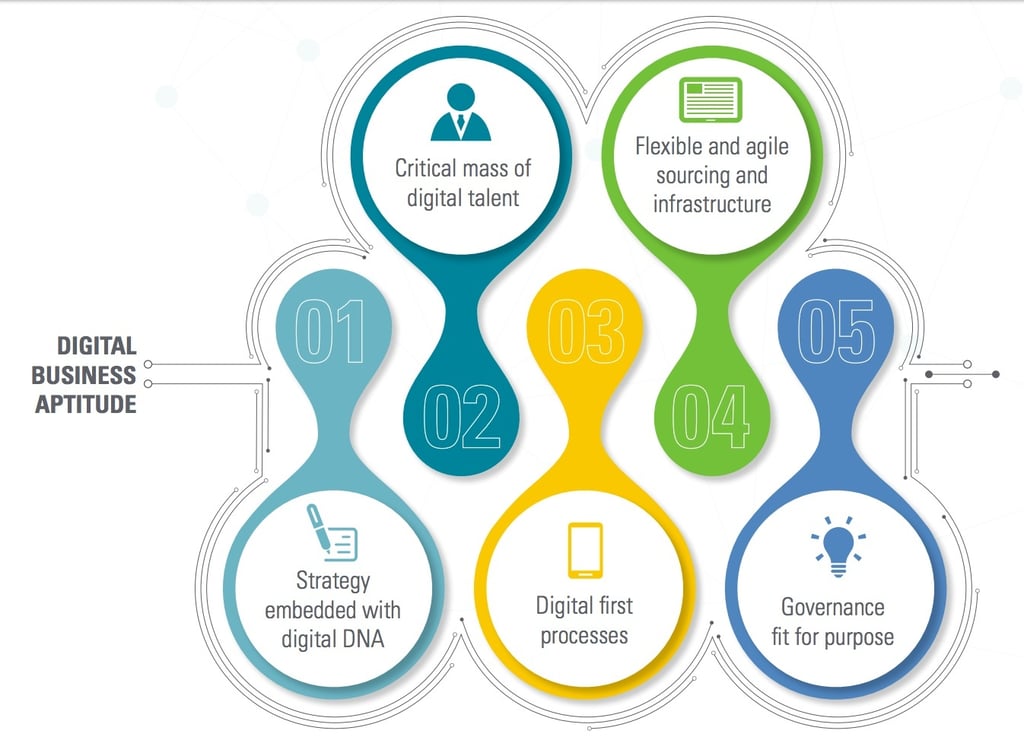
No business is safe from digital disruption. Even if you have embraced cloud and on-demand systems in your IT organization, your business is still vulnerable to market and competitive pressures to stay connected in real time with customers and partners. Technology is pervasive - and that means employees and customers want to work on the go, connect seamlessly and have up to the minute data at their fingertips. Their expectations are high. Oh, and did we mention that this all needs to be secure, reliable and flexible?
In a recent survey of IT executives conducted by Harvey Nash in association with KPMG, 62% of respondents said that their business was already being disrupted or would be within two years, yet only 27% indicated that they had an enterprise-wide digital strategy. IT leaders ignore or defer this gap at their peril.
It's not just about technology - although of course adoption and adaptation are central to customer experience today. Digital transformation is as much a mindset and process as it is a platform. Digitally empowered employees are able to access relevant customer data, draw insights in real time, and meet customers and prospects in the right place - online or offline - to serve them best.
At the same time, customers want to interact with brands digitally - equally so for consumer and business brands - and they expect that every company will provide a powerful, data-driven and personal experience that is just as satisfying as buying from Amazon or Apple.
It's a tall order. But not insurmountable.
Key to adapting your development and business teams' mindsets to achieve digital excellence is rapid ideation, a celebration of creative problem solving and a focus on critical thinking among all teams. Low-code platforms give you one strong and consistent method for spring boarding ideas to life - and a technical structure to quickly build and test ideas in practice.

Management consultancy firm KPMG identifies five domains of digital business aptitude practiced by companies that have successfully kept pace with digital business transformation (see figure above, source: KMPG)
KPMG finds these successful companies have:
- A clear vision of what digital means to their business and they have embedded their strategy with digital DNA.
- Assembled a critical mass of digital talent through a combination of internal and external resources and they leverage that talent across the enterprise.
- Digitized their core internal processes to create operational efficiencies by eliminating some processes and automating others.
- Established a flexible and agile infrastructure and sourcing model to increase flexibility and reduce time to value.
- Re-designed their governance to encourage and support innovation while enhancing their management of risk.
Where does low-code and the IT department fit in this construct? Specifically in domains 2, 3 and 4, but truly in service to all five domains. Low-code will literally help you empower development and business teams to bring ideas to life - and let you more easily manage your application portfolio. Here's how.
- Domain 2: Talent. A low-code platform helps you take advantage of citizen developers to speed time to market for some applications, while focusing your senior talent on strategy or complex projects.
- Domain 3: Efficient process. Feature and scope creep are the bane of every software development schedule. Low-code platforms aide in management of development process by empowering business users (as well as customers and partners) to participate fully in the development process, preventing misunderstandings, clarifying scope and increasing collaboration.
- Domain 4: Flexible and agile infrastructure. Low-code platforms are perfectly suited to agile methodologies of quick time-to-market and continuous iteration. They allow ideation and collaboration between developers and business teams. And, they give developers a common platform on which to continuously improve, replace and scale existing applications.
How are you handling your company's digital transformation? Is it front and center, or somewhat on the side? Share any thoughts on these five domains of success via Twitter and learn more about low-code. #SpringboardGreatMinds
Download our free whitepaper about Low-code in Swedish. A guide to technology that can dramatically increases the speed of application development and at the same time enables harmonization of the application portfolio.



